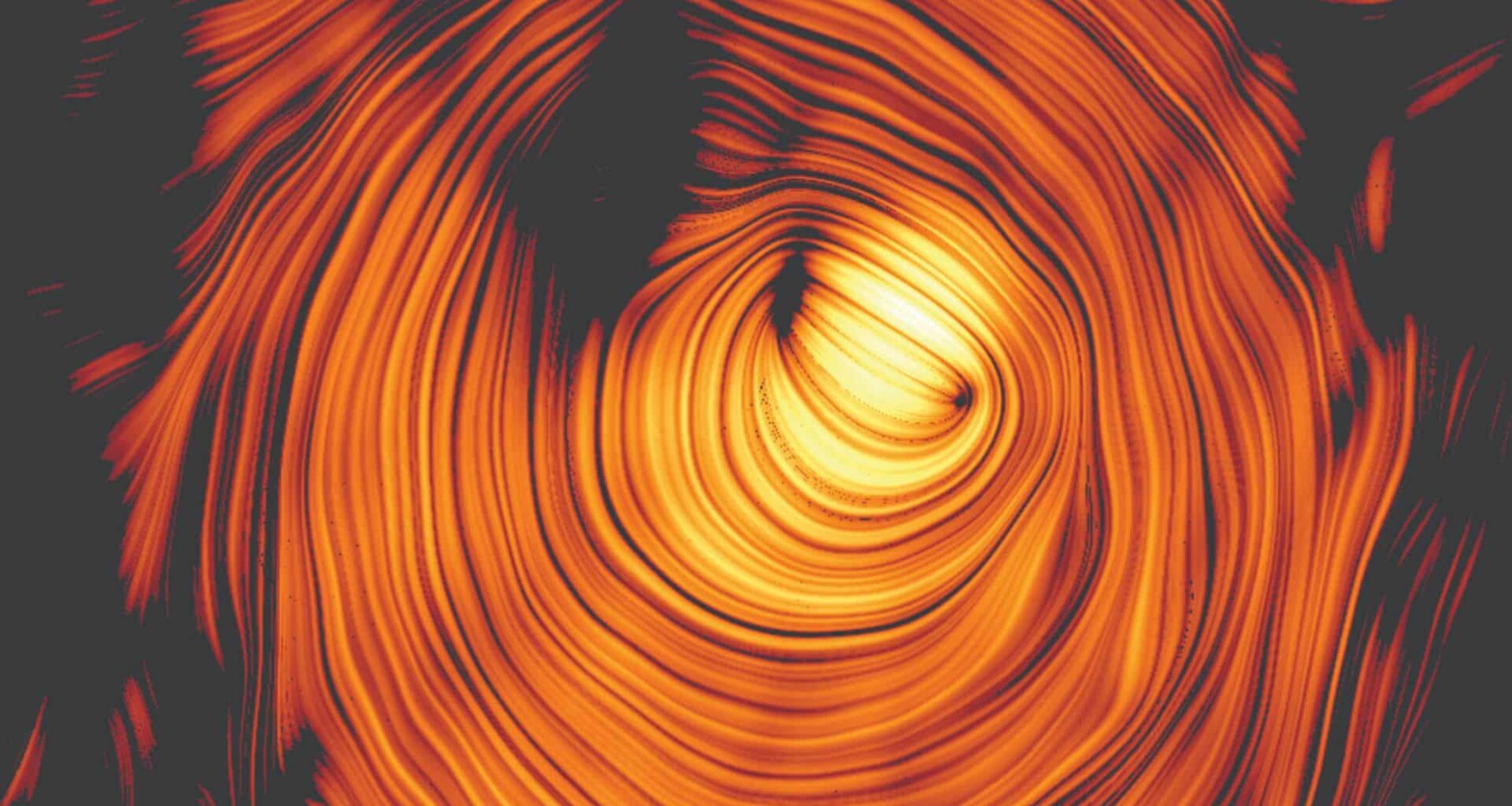In August 2025, a groundbreaking study was published in Astronomy & Astrophysics that unveiled the stunning details of a cosmic jet from the blazar PKS 1424+240. The study sheds light on one of the brightest sources of high-energy gamma rays and neutrinos ever observed, a puzzle that had baffled scientists for years. The research also helped identify the phenomenon that resembles the mythical “Eye of Sauron,” a powerful and eerie feature in deep space. The article published by Phys.org, covering these findings, offers insights into how this unique discovery will redefine our understanding of cosmic phenomena involving supermassive black holes, jets, and high-energy particles. In this article, we will explore the key findings of the study, the incredible technology behind the observations, and the potential implications for future astronomical research.
The Significance of the “Eye of Sauron” Discovery
The image of PKS 1424+240’s jet captured by the Very Long Baseline Array (VLBA) is nothing short of extraordinary. The blazar, located billions of light-years away, had already been identified as the brightest neutrino-emitting blazar known to astronomers. However, its sluggish appearance in radio waves defied the expected correlation between jet speed and brightness. This paradox intrigued astronomers, leading to an extensive investigation using the VLBA, which combines radio telescopes from around the world to form the largest virtual telescope on Earth.
Yuri Kovalev, the lead author of the study and Principal Investigator of the MuSES project at the Max Planck Institute for Radio Astronomy, described the image reconstruction as “absolutely stunning.” The jet, aligned nearly perfectly with Earth, appeared to display a near-perfect toroidal magnetic field. “We have never seen anything quite like it—a near-perfect toroidal magnetic field with a jet, pointing straight at us.” This alignment allowed researchers to peer into the heart of the jet, offering a rare opportunity to study the intricate details of the structure and behavior of this cosmic phenomenon.

The Puzzle of Slow-Moving Jets and Relativistic Effects
One of the most perplexing aspects of PKS 1424+240’s jet was its seemingly slow motion. Typically, astronomers associate bright gamma-ray and neutrino emissions with fast-moving jets that are directed at Earth. However, the jet of PKS 1424+240 appeared to be sluggish in radio wavelengths, contradicting expectations. This presented a unique challenge for scientists trying to understand the mechanism behind such high-energy emissions.
Jack Livingston, a co-author of the study, explained that the alignment of the jet toward Earth causes the brightness of the jet to increase significantly due to relativistic effects. “This alignment causes a boost in brightness by a factor of 30 or more,” he said. This phenomenon is a classic example of special relativity, where the emission is amplified as the jet comes closer to our line of sight. However, this alignment also creates a projection effect, making the jet appear to move more slowly than it truly is. This optical illusion puzzled scientists but ultimately helped them solve the mystery of the jet’s energy output.
Magnetic Fields and Particle Acceleration
One of the most significant outcomes of this research was the discovery of the structure of the magnetic field surrounding the jet. Using polarized radio signals, the team was able to map out the magnetic field and revealed that it likely has a helical or toroidal shape. This structure plays a crucial role in accelerating particles to extreme energies. Understanding this magnetic configuration has broader implications for how cosmic jets operate, particularly in active galactic nuclei powered by supermassive black holes.
Yuri Kovalev remarked that this discovery confirmed an important hypothesis: “Solving this puzzle confirms that active galactic nuclei with supermassive black holes are not only powerful accelerators of electrons, but also of protons—the origin of the observed high-energy neutrinos.” This revelation provides a clearer picture of the role of black holes in creating some of the universe’s most energetic and mysterious phenomena.
The MOJAVE Program: A Decades-Long Effort
The successful observation of PKS 1424+240’s jet is a major milestone for the MOJAVE (Monitoring of Jets in Active Galactic Nuclei with VLBA Experiments) program. Launched decades ago, this program aims to monitor relativistic jets in active galaxies using the VLBA. This network of radio telescopes allows astronomers to capture extremely detailed images of distant cosmic jets, providing insight into the high-energy processes occurring in these galaxies.
Anton Zensus, the Director at the Max Planck Institute for Radio Astronomy and a co-founder of the MOJAVE program, shared his excitement about the breakthrough. “When we started MOJAVE, the idea of one day directly connecting distant black hole jets to cosmic neutrinos felt like science fiction. Today, our observations are making it real.” This statement underscores the importance of the MOJAVE program in advancing our understanding of the universe’s most energetic objects.
